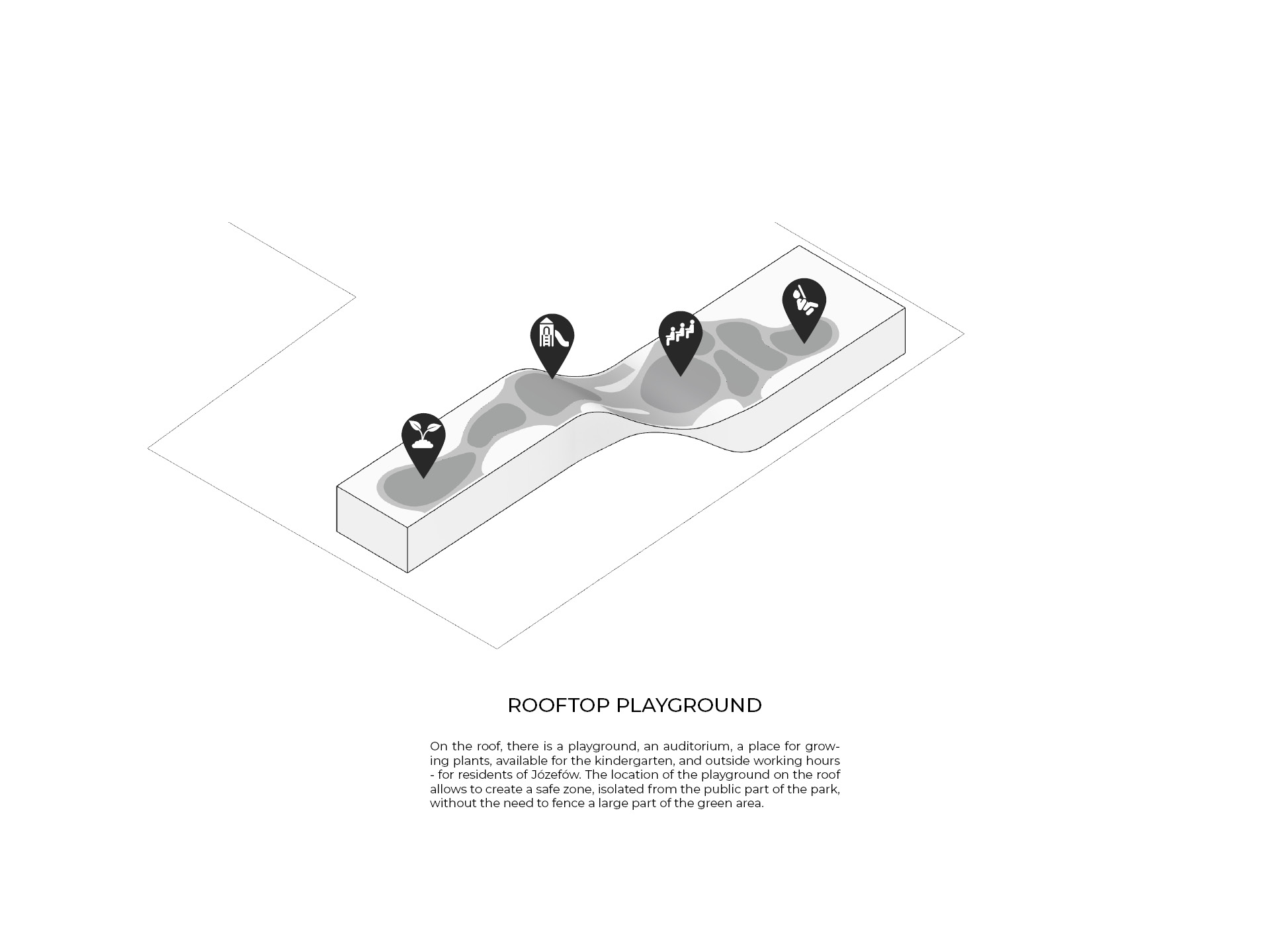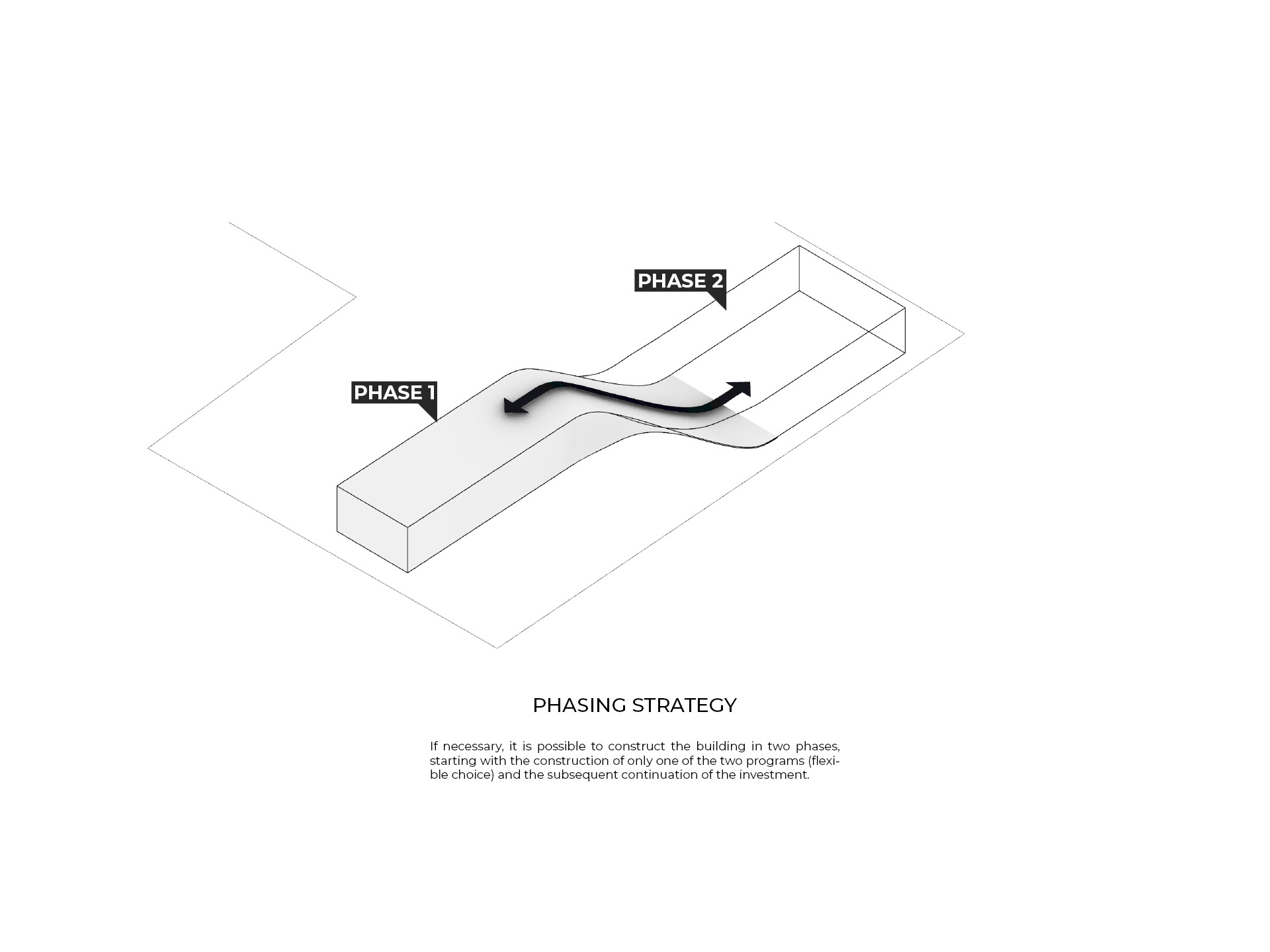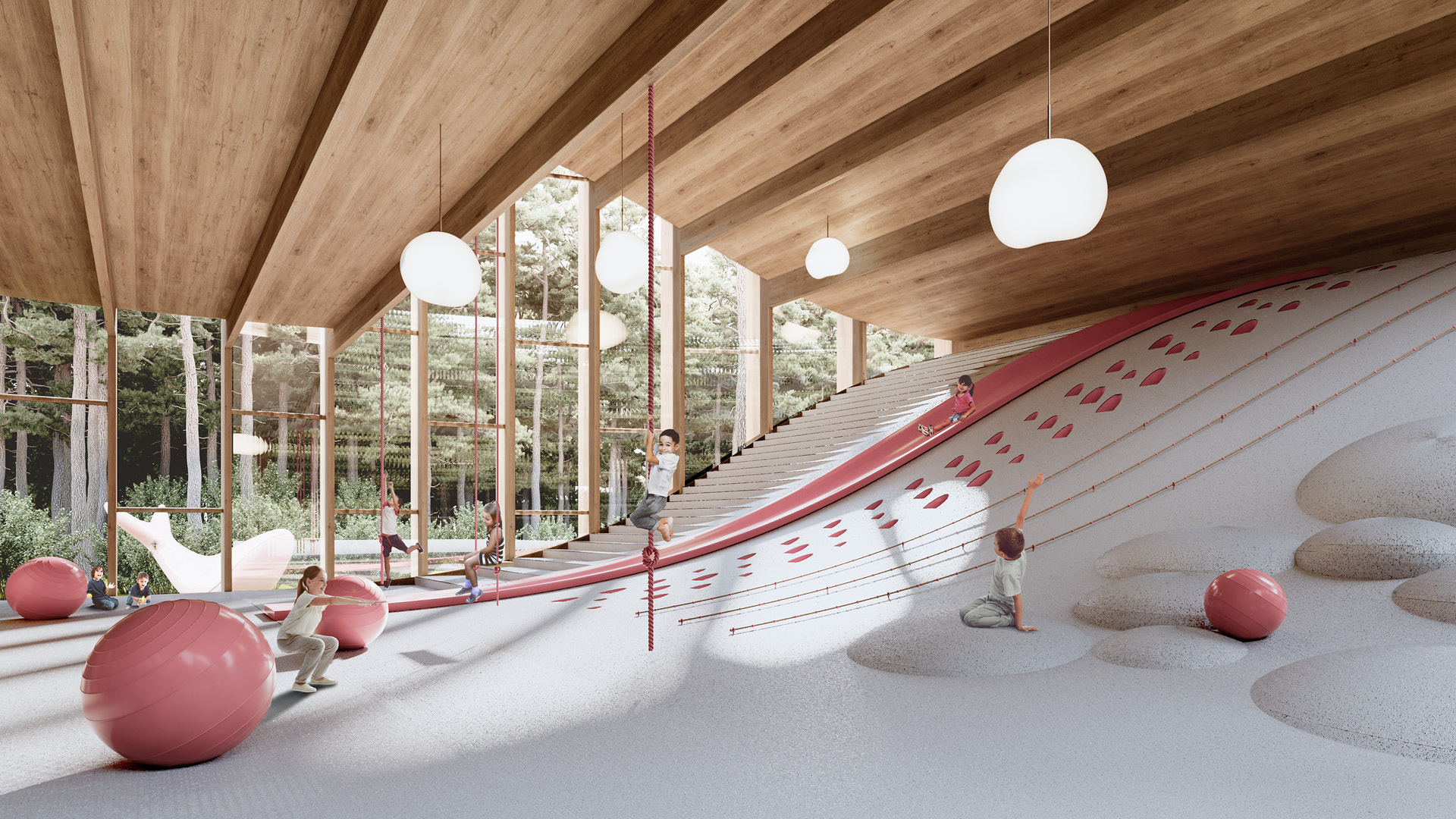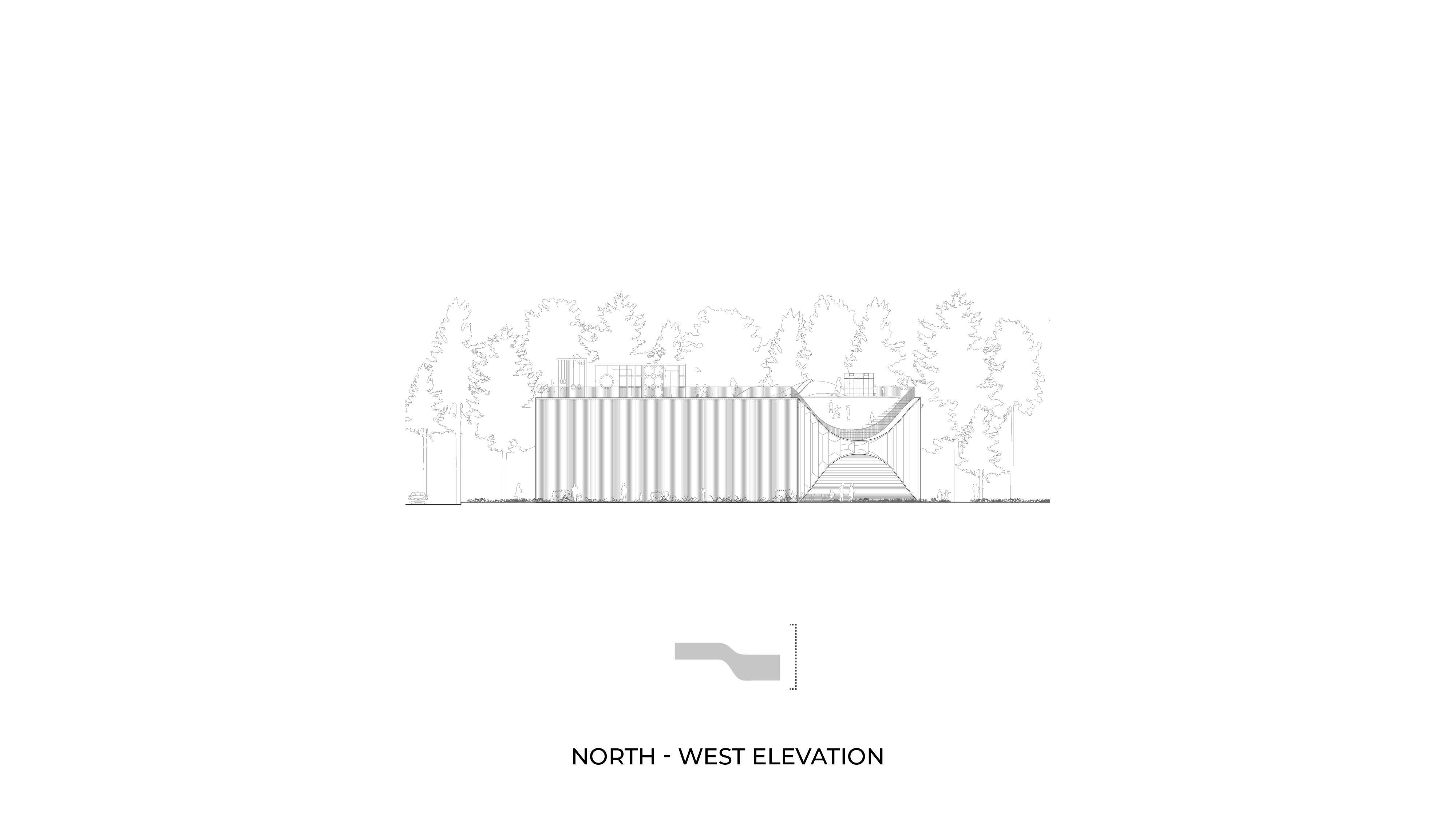THE NATURE GATE
Program: |
Architecture - Kindergarten & Library |
Size: |
4.800 m2 |
Location: |
Józefów, PL |
Client: |
Municipality of Józefów, SARP |
Team: |
Geoffrey Eberle, Magdalena Mróz, Paweł Marjański, Bartosz Dendura, Martyna Mądry |
Collaborators: |
studio4space |
Year: |
2021 |


























